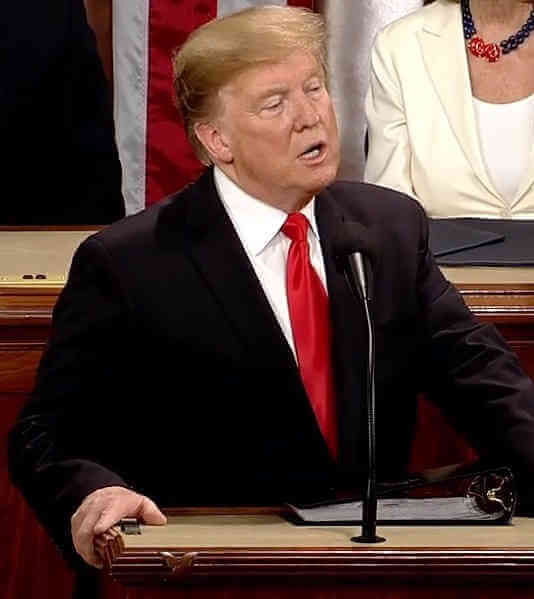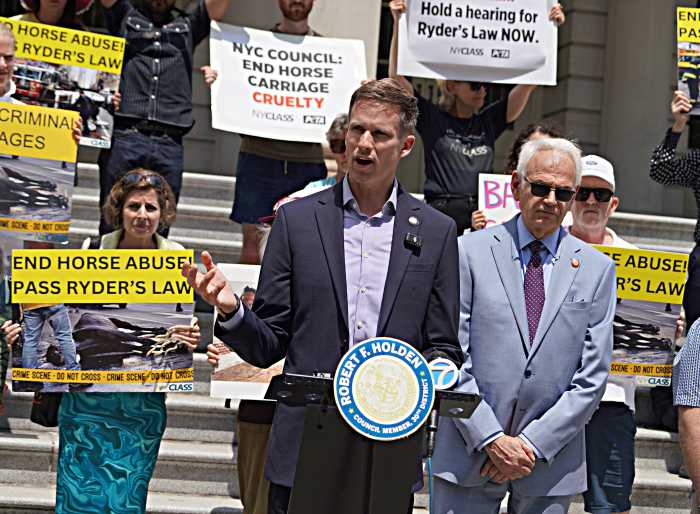Opinions released by two federal courts this month dramatically reduced the chances that lawsuits challenging the constitutionality of the Pentagon’s proposed ban on transgender service would be able to block its implementation even as the merits of the issue continue to be litigated.
And in a clear sign of how much the Trump administration is champing at the bit to get its policy in place, the Defense Department, on March 12, announced that it would go into effect in 30 days. That despite the fact that one of the nationwide injunctions barring its implementation is still technically in effect.
The policy is a modified version of the ban first announced by President Donald Trump in a series of tweets in July 2017 — and just how meaningful those modifications are has emerged as a central issue in the ongoing litigation brought by transgender military personnel and potential enlistees.
Until this past January, the transgender ban had been blocked by preliminary injunctions issued by four federal district judges in the fall of 2017.
The Supreme Court, on January 22, signaled how this issue would likely play out when it granted the government’s motion to stay preliminary injunctions issued by district courts in Riverside, California, and Seattle. The district court in Baltimore, following the high court’s lead, stayed the preliminary injunction issued there on March 7. And the Court of Appeals for the District Columbia, which had issued an unsigned order on January 4, also granting the government’s motion to stay a district court’s preliminary injunction there, finally issued written opinions on March 8.
The injunction in DC, however, remains in place, with the transgender plaintiffs having three weeks to seek further review. If their effort is turned back by the Court of Appeals, the Pentagon would seem to be free to meet its April 12 plans for impose the ban, even though the underlying merits of the four constitutional challenges would remain undecided.
Trump originally announced his intentions regarding transgender military service with virtually no advance warning to anybody in a series of tweets on July 26, 2017, stating, “The United States Government will not accept or allow transgender individuals to serve in any capacity in the US military.” A month later, the White House released a memorandum spelling out the details: all serving transgender individuals would be discharged and no transgender people would be allowed to enlist. James Mattis, who was then defense secretary, was tasked with drawing up a plan for implementation to take effect the following March.
The four lawsuits raised a variety of constitutional claims against the policy as spelled out in the August White House memorandum, and four district judges, all finding the plaintiffs were likely to succeed in proving the ban violated the rights of transgender service members and potential enlistees, granted preliminary injunctions against implementation. In the meanwhile, the policy opening military service up to transgender personnel announced in the last year of the Obama administration took effect on January 1, 2018, though reports indicated that enlistment applications were being slow walked by the Defense Department.
On February 22 of last year, Mattis gave the president his report, purportedly prepared by unidentified military experts, providing a justification for a modified version of Trump’s ban, which the Pentagon urged the White House to substitute for the August 2017 policy memorandum. Trump accepted the plan and the recommendation.
Mattis proposed allowing currently serving transgender personnel who had initiated or completed transition to stay in the military under a grandfathering provision. Other transgender people could serve unless they were diagnosed with gender dysphoria, but they would have to serve consistent with their sex as designated at birth. Anybody diagnosed with gender dysphoria would be disqualified from serving or enlisting.
In proposing these distinctions, the Mattis plan purported to change the basis for exclusion from transgender status to the condition of suffering from gender dysphoria, a psychiatric designation that could be easily exploited to suggest a disabling condition justifying exclusion from the military. The fact that many people diagnosed with gender dysphoria had served honorably and effectively for extended periods of time apparently gave no pause to the “experts” who authored Mattis’ report.
Since the Mattis plan replaced the August 2017 White House memorandum, the government filed motions in all four courts last March seeking to dissolve or stay their preliminary injunctions, arguing that the new policy was distinguishable from the original policy the administration had put forward. But three of the district judges quickly concluded the Mattis plan was not really new, but simply a recipe for implementing the ban originally announced by the president. In the Baltimore district court, the judge who issued the preliminary injunction retired last June without ruling on the government’s motion, which was inherited by Judge George L. Russell, III, who acted only this month, following the Supreme Court’s lead.
Though the Trump administration appealed the district court injunctions to the Ninth Circuit and DC Circuit Courts of Appeals, it soon became impatient and turned to the Supreme Court in an effort to leapfrog the intermediate appellate courts. Before the high court ruled on that effort, the DC Circuit issued its order granting a stay, and the Supreme Court acted in similar fashion weeks later regarding the two Ninth Circuit cases, in Riverside and Seattle.
Two March 8 opinions from the DC Circuit shed light on what may have been a contentious internal debate among its panel members: Thomas B. Griffith, Robert C. Wilkins, and Stephen F. Williams.
In its unsigned January 4 order, the court was brief and to the point, noting the differences between the August 2017 White House memorandum and the 2018 Mattis plan, rejecting the district judge’s conclusion that the latter was essentially the same ban. The opinion seemed to take at face value the government’s argument that Mattis’ plan was not an “implementation” of the Trump ban, but rather a newly conceived policy informed by serious study and expert military opinion.
In his opinion for the DC Circuit panel, Judge Wilkins noted the distinction the Mattis plan made between being transgender and having gender dysphoria, seizing upon statements from the plaintiffs’ experts that not all transgender people have gender dysphoria and that not everyone with gender dysphoria will need to transition as part of their therapy. Wilkins pointed out that Mattis’ plan makes it possible for transgender people who do not have gender dysphoria to serve. In this sense, he concluded, the Mattis policy is not a categorical ban on transgender service and may fall within the range of military decision-making to which federal courts would ordinarily defer.
Wilkins’ approach did not satisfy Judge Williams, who wrote in a separate opinion that the court should dismiss the lawsuit outright. “Even if we were simply reviewing a motion to dissolve [the injunction], we still must resolve the constitutionality of the Mattis policy,” he wrote.
Finding that Mattis’ policy was a “significant change in circumstances” after the original injunction was issued because of its differences from the original Trump ban, he wrote, “we must decide whether the change in circumstances renders continued enforcement of the injunction detrimental to the public interest. To make this determination, we need to ascertain whether ongoing enforcement of the original preliminary injunction is supported by an ongoing violation of federal law.”
He continued, “We do that by assessing whether constitutional compliance has been achieved by the Mattis policy — that is, we decide whether the Mattis policy is constitutional.”
Williams cited the long tradition of courts abstaining from interference with military personnel policy and he pointed out that the open service policy adopted late in the Obama administration was full of hedging about the circumstances under which transgender people would be allowed to serve and the conditions that might disqualify specific individuals. To Williams, the policy announced by former Defense Secretary Ash Carter in June 2016 was not all that different from Mattis’ February 2018 policy.
“Gender dysphoria is also a serious mental health condition recognized by the American Psychiatric Association,” he wrote. “It is ‘associated with clinically significant distress or impairment in social, occupational, or other important areas of functioning,’” quoting from the group’s diagnostic manual. “The limits on accession and retention of those with gender dysphoria, imposed by the military (under both Secretaries Carter and Mattis), are thus akin to the many demanding selection practices that render the ‘vast majority’ of military-age Americans — a full 71 percent — presumptively ineligible. This includes disqualification for ‘any’ DSM-recognized condition that (like gender dysphoria) is associated with ‘residual symptoms, or medication side effects, which impair social or occupational performance.’”
In disqualifying individuals with gender dysphoria,” Williams asserted, “the Mattis policy, like the Carter policy before it, serves the same legitimate interests as other disqualifications: ensuring that the armed forces consist ‘of qualified, effective, and able-bodied persons,” here quoting from statutory standards for enlistment.
Williams gave credence to Trump administration efforts to buffer the expert basis for a policy initiated haphazardly by the president’s July 2017 tweets. For example, in June 2017, Mattis announced he would delay implementing the open service policy announced by his predecessor Carter the year before in order to prepare for implementation. The administration now re-characterizes this as Mattis’ intention to “reevaluate the previous administration’s policies,” a framing Williams embraced. And so, he also takes at face value Trump’s reference, in his July 2017 tweet, to having consulted “my general and other experts” before deciding to impose a total ban, even though the White House has absolutely refused to name those individuals.
The plaintiffs, Williams concluded, “cannot prevail” so “the wisest course is to terminate the litigation now.”
Should the transgender ban go into effect next month, the four constitutional challenges remain alive, and discovery remains a contentious issue in all four cases. The Justice Department has stonewalled on requests for information about how the policy decisions were made and to what degree actual expert opinion was the basis for the conclusions the government is putting forward in defense of the policy.

































